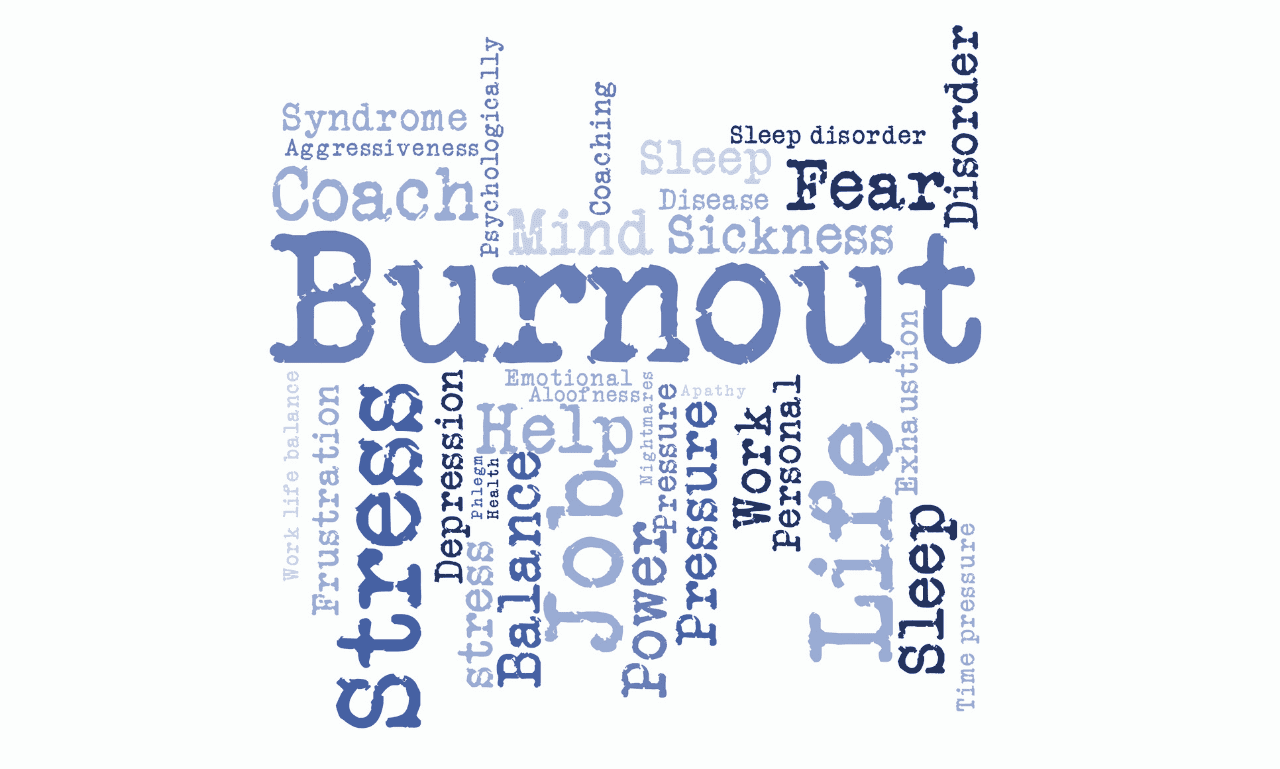The modern workplace has transformed dramatically in recent years. Remote work has become standard for many organizations. Employees face mounting pressure to deliver peak performance constantly. The boundaries between professional and personal life continue to blur. This perfect storm creates ideal conditions for employee burnout.
Burnout costs businesses billions annually through reduced productivity and increased turnover. Companies can implement specific strategies to protect their teams. This article explores effective approaches to prevent burnout before it takes hold.
What is employee burnout?

Employee burnout represents a state of chronic workplace stress that hasn't been effectively managed. The World Health Organization officially classified it as an occupational phenomenon in 2019. Burnout develops gradually when job demands consistently exceed available resources.
This condition differs from ordinary work stress. Regular stress typically involves temporary pressure that resolves. Burnout manifests as complete emotional, physical, and mental exhaustion. Three primary dimensions characterize workplace burnout: overwhelming exhaustion, cynicism and detachment, and reduced professional efficacy.
Employee Burnout Signs
Physical symptoms
The body often signals burnout before the mind fully recognizes it. Chronic fatigue persists regardless of sleep quality or duration. Unexplained physical ailments frequently accompany burnout progression. Headaches become more frequent, and muscle pain develops without apparent causes.
Sleep disturbances represent telling indicators of developing burnout. Insomnia, despite physical exhaustion, commonly occurs. Increased susceptibility to illness often accompanies burnout development. The immune system weakens under chronic stress conditions.
Emotional indicators
Emotional changes provide clear windows into developing burnout conditions. Detachment from work represents one of the earliest warning signs. Employees who previously showed enthusiasm now express cynicism.
Feelings of failure and self-doubt intensify as burnout progresses. Previously confident employees regularly question their competence. Helplessness pervades the emotional landscape of burned-out employees, who perceive workplace challenges as insurmountable.
Behavioral changes
Observable behavioral shifts often signal the development of burnout most clearly. Withdrawal from workplace relationships represents a common early indicator. Previously, social employees began isolating themselves.
Performance decline follows predictable patterns during burnout development. Work quality decreases gradually and then precipitously. Increased absenteeism often accompanies advancing burnout. Coping mechanisms usually become problematic as burnout intensifies.
Cognitive symptoms
Mental function deteriorates in specific ways during burnout progression. Concentration difficulties emerge even with previously simple tasks. Decision-making abilities decline noticeably during burnout development. Previously decisive employees become paralyzed by routine choices.
Creativity diminishes as burnout progresses through its stages. Innovative thinking requires mental energy, which is unavailable during burnout. Memory problems create additional challenges for burning out employees. They forget important meetings or deadlines more frequently.
How to prevent employee burnout?
Prevention requires comprehensive approaches addressing various workplace factors. The following strategies provide powerful tools for burnout prevention.
Embrace humor

Humor transforms workplace culture in meaningful ways. Starting meetings with light-hearted moments shifts the emotional atmosphere immediately. Laughter reduces stress hormones while releasing endorphins naturally. These biological benefits create immediate relief from tension.
Creating space for appropriate humor fosters psychological safety. Employees feel comfortable expressing themselves authentically. Humor helps maintain perspective during difficult periods. Challenges seem less overwhelming when balanced with moments of lightness.
Flexibility
Flexible work arrangements have become essential for preventing burnout. Remote or hybrid options give employees control over their environment. This autonomy reduces commute stress and improves work-life integration.
Flexible scheduling allows people to work during their most productive hours. Morning people can start early when their energy peaks. Focus days without meetings provide uninterrupted time for deep work. Flexibility regarding work methods matters equally. Focus on outcomes rather than specific approaches.
Playtime
Structured play at work provides surprising benefits for burnout prevention. Research confirms that playful activities stimulate creativity and problem-solving. Innovation sessions involving creative challenges refresh mental processes. These breaks from routine work prevent monotony, which leads to disengagement.
Physical play offers particular benefits for knowledge workers. Brief movement breaks reset both body and mind. Gamification transforms routine tasks into engaging challenges. Friendly competitions around necessary but tedious responsibilities increase motivation.
Acknowledgments
Recognition prevents burnout by satisfying fundamental human needs. Everyone requires acknowledgment for their contributions. Regular, specific praise reinforces purpose and meaning. Effective recognition must be timely and precise.
Public acknowledgment carries special weight when handled thoughtfully. Dedicated channels for team recognition create cultures of appreciation. Personal recognition from leadership creates a lasting impact. Direct appreciation from managers validates employee efforts meaningfully.
Connect with your team
Meaningful connection prevents isolation from accelerating burnout. Regular one-on-one meetings build relationships beyond task discussions. Create opportunities for authentic team bonding regularly. Virtual connection points for remote workers maintain the social fabric.
Active listening demonstrates genuine concern for team members. Follow through on concerns or suggestions raised during conversations. Appropriate vulnerability creates space for honest communication. Normalizing the discussion of challenges prevents silence around struggles.
For a healthy work environment
Creating healthy work environments requires intentional design. Physical spaces significantly impact mental and emotional well-being. Consider natural light, comfortable furnishings, and appropriate noise levels.
Psychological safety forms the foundation of healthy workplace cultures. Team members must feel secure taking risks and making mistakes. Clear boundaries between work and personal time have become increasingly important. Establish expectations regarding after-hours communications.
Workload management represents perhaps the most critical environmental factor. Regularly evaluate team responsibilities for balance and sustainability. Adjust expectations during high-stress periods. Provide additional resources before exhaustion develops.
Increase morale with incentives
When designed thoughtfully, strategic incentives boost morale and prevent burnout. Financial rewards certainly matter to employees. Spot bonuses for exceptional effort demonstrate immediate recognition.
Growth opportunities serve as powerful non-financial incentives. Access to training and development resources demonstrates an investment in people. Wellness incentives directly counter burnout's physical manifestations. Stipends for fitness activities support overall health.
Time-based incentives directly address the exhaustion component of burnout. Additional paid time off appropriately recognizes extraordinary effort, and flexible scheduling during challenging periods prevents accumulated fatigue.
Causes of employee burnout

Unsustainable workloads
Excessive workloads represent the most common burnout trigger worldwide. Project stacking without adequate resources guarantees eventual breakdown. The human capacity for sustained high performance has natural limits.
Many companies unintentionally create impossible expectations. They reduce staff while maintaining or increasing deliverables. Deadline compression compounds workload issues significantly. Projects requiring weeks get scheduled for days.
Lack of control
Feeling powerless accelerates burnout regardless of other factors. Employees need appropriate autonomy to maintain engagement. People without control over their work become frustrated quickly.
Micromanagement represents control's most destructive form. Constant oversight signals fundamental distrust. Employees stop investing emotionally in their work. Sudden policy changes without input create similar feelings. People resent new rules imposed without consultation.
Insufficient recognition
Recognition deficits create fertile ground for burnout development. People working hard without acknowledgment feel invisible, which contradicts basic human needs for validation.
Many leaders mistakenly believe results should provide sufficient recognition. They expect intrinsic motivation to sustain employees indefinitely. Recognition gaps affect team dynamics beyond individual well-being. People notice who receives the acknowledgment and who doesn't.
Values misalignment
Working against personal values accelerates burnout dramatically. Ethical conflicts create profound psychological distress. Employees forced to violate their principles suffer identity fragmentation.
Many organizations have disconnects between stated and operational values. They claim to prioritize quality but reward speed exclusively. Values alignment serves as powerful burnout prevention. People working in harmony with their principles access unusual resilience.
Poor community
Toxic workplace relationships accelerate burnout regardless of other factors. Conflict, competition, and isolation drain emotional resources rapidly. Humans need supportive social connections to thrive.
Office politics create particularly destructive environments. People waste energy navigating complex relationship dynamics. Meaningful connection with colleagues protects against various burnout factors. Strong workplace relationships provide emotional support during challenges.
Conclusion
Preventing burnout requires commitment at organizational and individual levels. The strategies outlined provide practical starting points. Implementing them creates resilient work environments, and healthy teams consistently produce better results.
Every investment in burnout prevention yields multiple returns. Reduced turnover saves significant recruitment and training costs. Higher productivity directly improves bottom-line results. Enhanced innovation drives long-term competitive advantage.
Start with one strategy that resonates with your current situation. Build incrementally rather than attempting everything simultaneously. Small, consistent changes create lasting transformation. Intentional action can stop the burnout epidemic.
Also Read: Best Mental Health Companies to Work For




